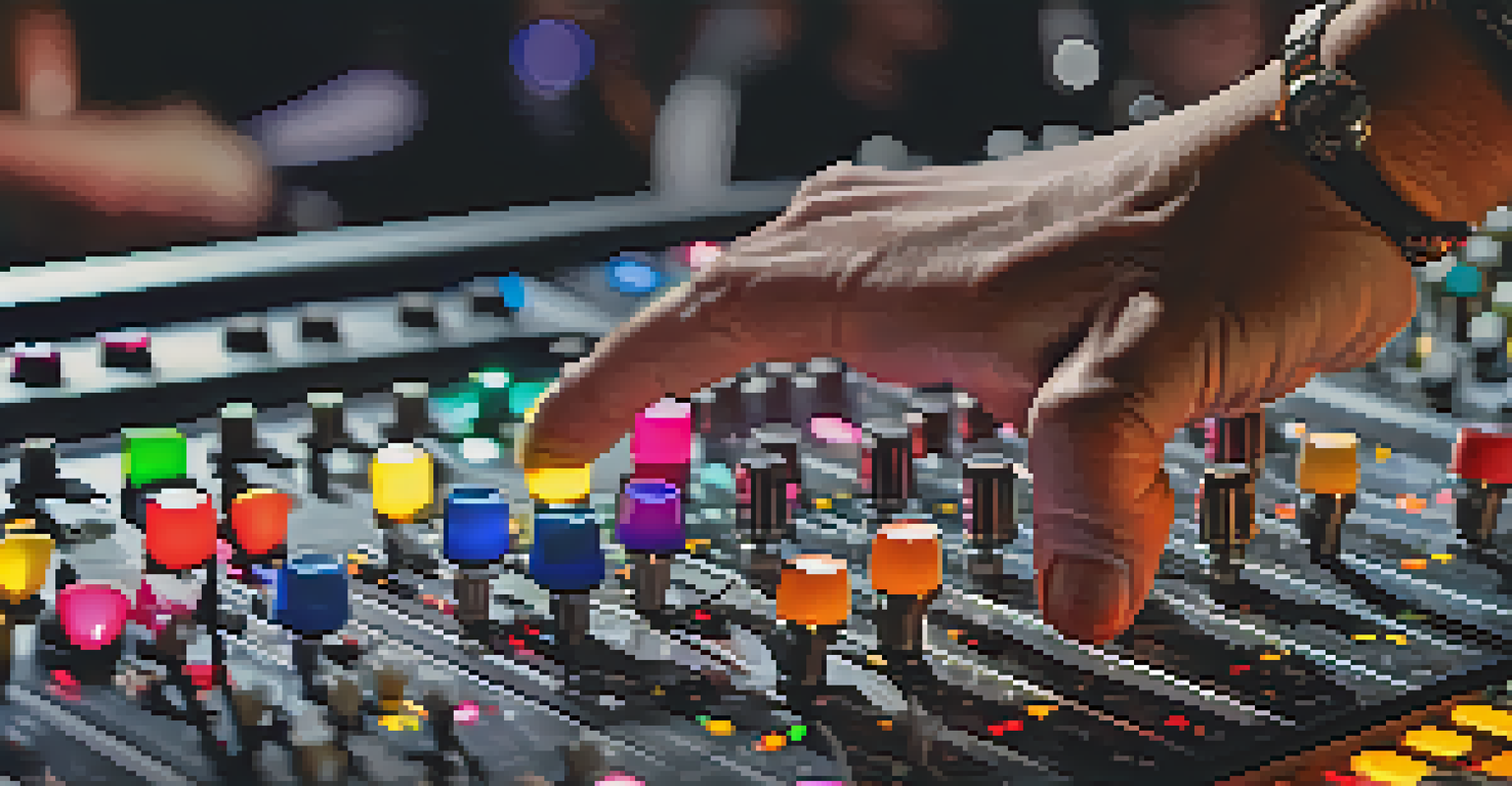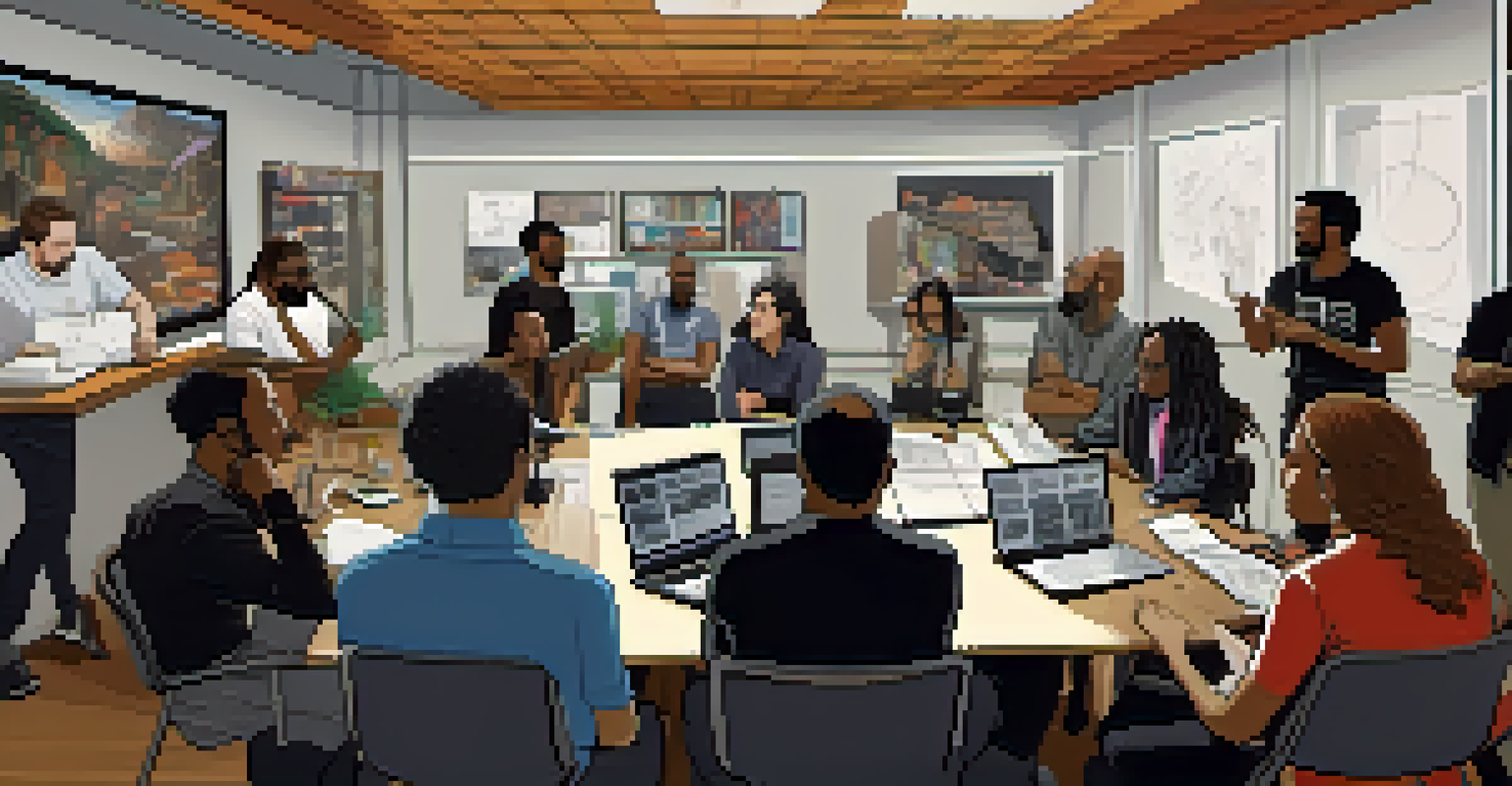The Importance of Communication in Live Sound Teams

Effective Communication Sets the Foundation for Success
In any live sound setting, effective communication is the backbone of success. Without it, misunderstandings can lead to technical failures or missed cues, wreaking havoc on performances. When team members share information clearly, everyone knows their responsibilities and can act quickly and efficiently.
The art of communication is the language of leadership.
For instance, during a live concert, the sound engineer needs to communicate with musicians and stage managers to ensure that everything runs smoothly. This includes relaying updates about sound levels, equipment issues, or changes in the setlist. The clearer the communication, the more seamless the experience for both the performers and the audience.
Thus, fostering an environment where open dialogue is encouraged can drastically improve a team's performance. Regular check-ins and briefings can help everyone stay on the same page, leading to a more cohesive team dynamic.
Building Trust Through Open Communication
Trust is a crucial element in any team, especially in high-pressure environments like live sound. When team members communicate openly, they build trust among themselves, which can lead to higher morale and better collaboration. This trust allows individuals to share their ideas and concerns without fear of judgment.

For example, if a sound engineer feels comfortable expressing a concern about a potential issue with the soundboard, they can prevent larger problems from arising during the show. This proactive communication can save time and ensure that the performance goes off without a hitch.
Communication is Key to Success
Effective communication ensures that team members understand their roles and responsibilities, leading to smoother live performances.
Ultimately, trust cultivated through communication not only enhances the working relationship but also leads to improved outcomes. Teams that prioritize trust are more likely to navigate challenges together, resulting in a smoother live show.
Non-Verbal Communication: The Unsung Hero
While verbal communication is vital, non-verbal cues are equally important in live sound teams. Body language, facial expressions, and hand signals can convey messages quickly, especially in noisy environments where spoken words might get lost. Understanding these cues can help team members react swiftly to changes without missing a beat.
The single biggest problem in communication is the illusion that it has taken place.
For instance, a quick thumbs up from the lighting technician can indicate that the sound levels are just right, allowing the sound engineer to focus on other tasks. Similarly, a subtle nod can signal agreement on a change to the setlist without disrupting the flow of the performance.
By being attuned to both verbal and non-verbal communication, team members can enhance their coordination and responsiveness. This dual awareness can make a significant difference in live performances, where every second counts.
The Role of Technology in Enhancing Communication
In today's tech-savvy world, technology plays a crucial role in facilitating communication among live sound teams. Tools like intercom systems, communication apps, and wireless headsets allow team members to stay connected in real-time, no matter where they are on stage. This connectivity is essential for addressing issues quickly and efficiently.
For example, a sound engineer can use a wireless headset to communicate with the band while monitoring sound levels. This immediate feedback loop ensures that adjustments can be made on the fly, enhancing the overall performance quality. The quicker the response time, the better the experience for both performers and the audience.
Trust Builds Team Cohesion
Open communication fosters trust among team members, which enhances collaboration and morale in high-pressure environments.
Harnessing technology not only improves communication but also helps streamline operations. Teams that effectively integrate these tools into their workflow can focus more on creativity and less on logistical challenges.
Creating a Culture of Feedback
Feedback is an essential element of communication in any team, and live sound teams are no exception. Establishing a culture where constructive feedback is welcomed can significantly improve performance quality. This approach allows team members to learn from each other and grow in their roles.
For instance, after a show, the team might hold a debriefing session to discuss what went well and what could be improved. This open dialogue not only helps identify potential areas for enhancement but also fosters a sense of unity among team members. Everyone feels valued and heard, which can lead to increased job satisfaction.
Creating a feedback-rich environment encourages continuous improvement, ultimately benefiting the entire team. When individuals feel empowered to share their insights, the team can adapt and evolve over time.
Handling Conflicts: Communication as a Solution
Conflicts are inevitable in any team setting, but effective communication can help resolve them constructively. When differences arise, addressing them openly and respectfully is crucial. This approach not only prevents issues from festering but also strengthens relationships within the team.
For example, if a sound engineer disagrees with a musician’s request, discussing the concerns openly can lead to a compromise that satisfies both parties. Rather than allowing emotions to escalate, clear communication can turn potential conflicts into opportunities for collaboration.
Audience Experience Depends on Teamwork
Seamless communication within live sound teams directly enhances the audience's experience, making events more memorable.
By fostering a culture where conflicts are addressed through dialogue, teams can maintain a positive working atmosphere. This proactive approach can transform challenges into learning experiences, ultimately enhancing team cohesion.
The Impact of Communication on Audience Experience
At the end of the day, effective communication within live sound teams directly impacts the audience's experience. When team members are in sync and share information seamlessly, the result is a polished performance that resonates with the audience. This connection is what makes live events memorable.
For instance, if a sound engineer quickly adjusts levels based on feedback from the band, the audience benefits from a better sound experience. Likewise, when lighting and sound teams coordinate effectively, the overall atmosphere of the event is elevated, creating an unforgettable experience for everyone in attendance.

Ultimately, communication is not just about the team; it’s about delivering an exceptional experience to the audience. Teams that prioritize clear communication will leave a lasting impression on their viewers, fulfilling their primary goal.